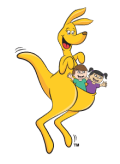Authors: Dr Jane Williams and Dr Tessa Grigg
Babies are born with very little sense of their own body. Sensory- motor activities help them learn. They do not know where their bodies end or begin. Each touch and movement sends messages to their brain and helps them find out that they have different body parts. Body awareness is important for the development of body control and coordination as well as the development of self-concept or self-image. It is the basis on which to build skills essential for classroom learning. For many children their range of sensory-motor experiences has been reduced through the COVID-19 experience of lockdown. Compensating for the changes in children’s lives has become very important. We have some ideas to help.
Body awareness develops through sensory-motor experiences in infancy and throughout childhood. As babies feel the world around them through movement and touch, the brain develops a ‘map’ of the body. This map becomes more and more sophisticated and accurate as experiences increase and babies develop the ability to move their bodies in a purposeful manner.
The brain contains memories of not only body parts, but also information about their size, weight, boundaries, and their position in the relation to the rest of the body. It also builds up memories related to the environment – information about the nature of gravity, the hardness of some things, the flexibility of others etc. In this way the brain is able to know how fast, and how hard each muscle must work to accomplish a task, what to do and not to do with an object, and how to balance so as not to fall over.
It is like driving a car. We develop a ‘feeling’ – stored information – about how hard to turn the wheel, push the accelerator, step on the brake or how close to park to the next car in the car park. It becomes ‘automatic’. If we do not have a good ‘percept’ of our car we are apt to have accidents. It is the same for a child who has poorly developed body awareness – they are apt to be clumsy and uncoordinated.
For good body awareness, and in order to learn, understand, be aware and create a ‘good’ body map, the brain must receive adequate messages from all the nerve networks that come in from our senses. It is also important to realise that it is not enough just to ‘map’ the body, we must also be able to relate this information to movement in space. This is achieved from information received by the vestibular system (in the inner ear). Messages from this system help us to know where we are in relation to gravity, in order to balance our bodies. These messages are also important for the coming together and sorting (integration) of all the other sensory messages (seeing, feeling, joint & muscle movement, hearing). It is only when the senses work together that we know where we are in space, so we can plan our motor movements accordingly.
Here are some great activities that help your child develop body awareness:
- Massage – infants and small children all benefit from regular massaging. This helps your baby ‘feel’ their body parts. Make bath time a fun place for different tactile experiences. Rub with different textured objects and dry with smooth and rough towels. Don’t forget to talk about the body parts as you wash them!
- Exercises help babies and toddlers learn about themselves as they move through space. By 2 years of age they will be able to move their own body parts for exercise.
- Rolling on beds, on the floor, down slopes provides lots of ‘touch’ experiences while the vestibular system gets lots of messages as well!
- Don’t drive if you can walk! Give your young child plenty of opportunities to explore. Let them jump in puddles, walk over different surfaces, poke and pry!
- Rough, tumble and whizz around with your children. Let them spin themselves. They need how to learn to control their body parts as they move through space.
- Limit TV and screen time. Your child learns little in front of ‘the box’ or the screen, when what their brain needs is movement!
- Play singing games that refer to body parts, and hand & foot rhymes that so your child learns to find and touch his body parts ‘on command’.
- Hand, foot and toe prints in the sand, dirt or with paint are messy but fun!

